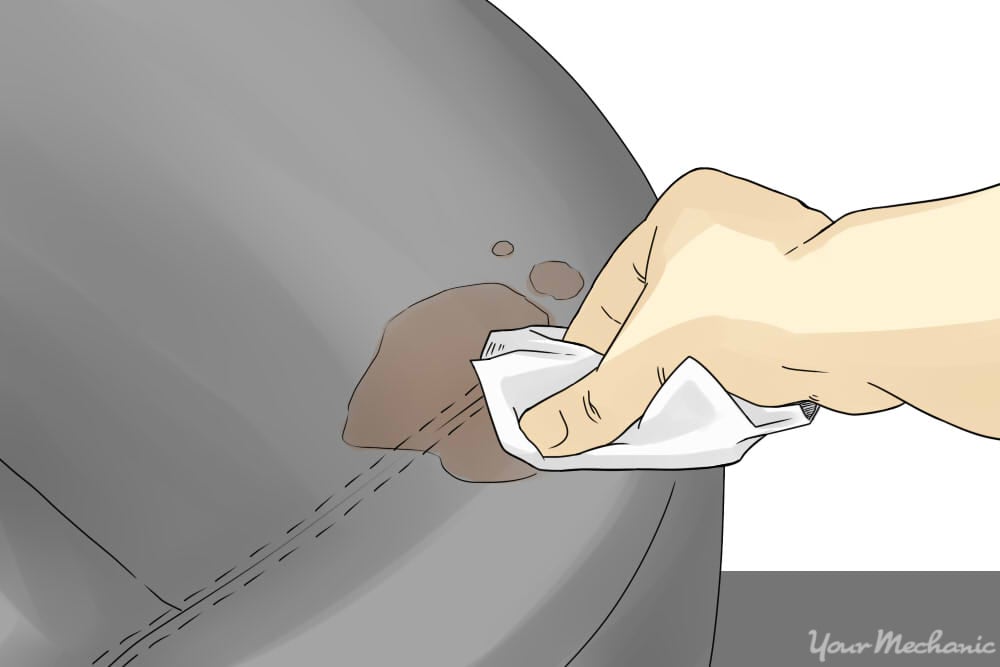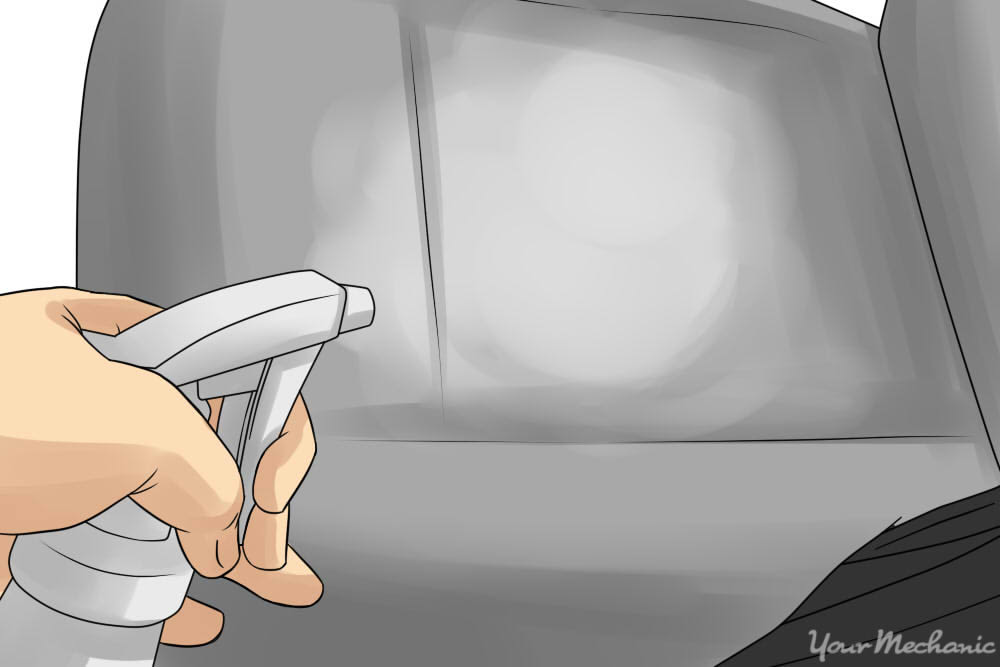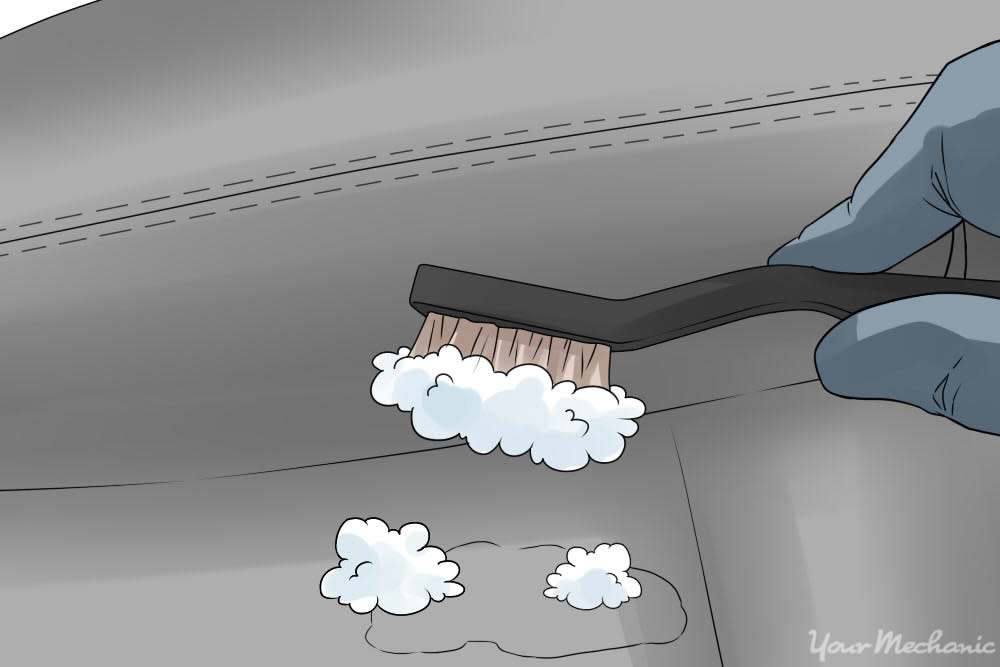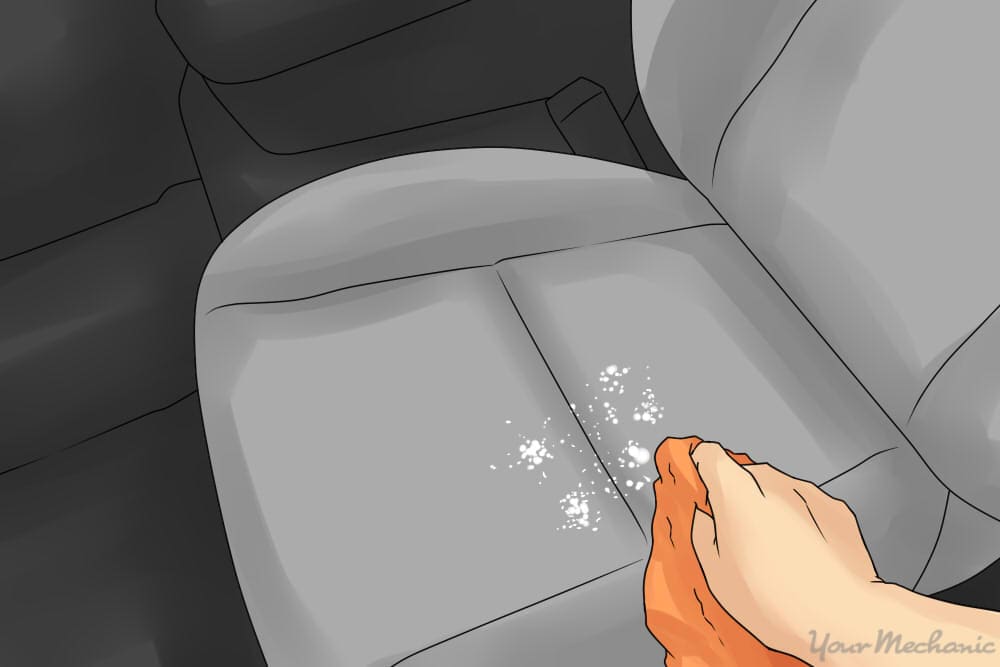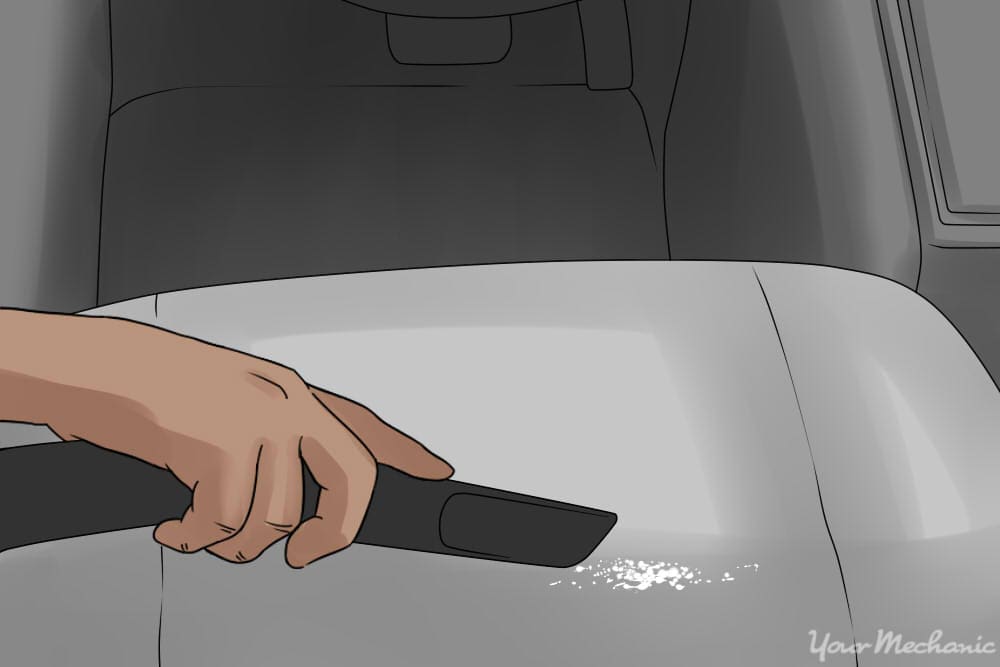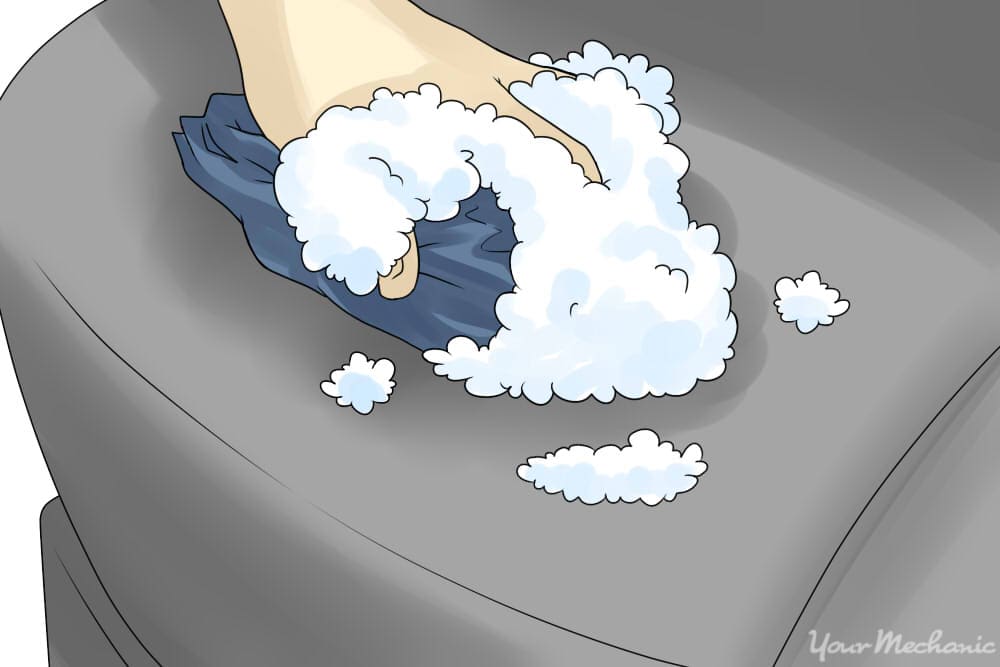

As careful as you may try to be in your car, there’s a good chance you’re going to experience a spill at some time or another. The only surefire way to prevent a spill is to never have food, drink, or other liquids in your vehicle at any time.
Spills can occur from various sources such as:
- A child’s juicebox or milk container
- Car cleaners and lubricants
- Drips from a hamburger
- Soda or coffee
The process to spot clean your car’s upholstery will vary depending on the substance that has spilled.
Part 1 of 3: Clean up the liquid
Materials Needed
- Cloth or paper towels
- Warm water
Step 1: Absorb the spilled liquid with a clean cloth or paper towel. Address the spill as soon as it happens.
Absorb any liquid that is on the surface of your seat by loosely placing the cloth over the wet area.
Let droplets on the surface of the seat absorb into the cloth.
Step 2: Apply pressure to absorb soaked-in liquid. Use a clean part of your cloth and blot the area where the liquid soaked in.
If the spill is just water, continue to apply pressure until there is no more noticeable change in the dampness on the seat. See Part 2 for water-based liquid stains, and Part 3 for oil-based stains.
- Warning: If the substance is anything other than water, do not rub the wet spot. It can spread staining on the seat.
Step 3: Use a wet cloth to lift light water-based stains. If the substance is water-based such as juice or milk, wet your cloth with warm water and blot the spot with your wetted cloth.
A wet cloth can help draw dyes and natural colors out along with natural substances.
- Warning: If the spill is oil-based like engine oil or another lubricant, do not use water on it. It can cause the oil stain to spread in the fabric.
Part 2 of 3: Clean up water-based spills
Materials Needed
- Baking soda
- Clean cloths
- Soft-bristled brush
- Upholstery cleaner
- Vacuum
Step 1: While the spill is still wet, spray it with upholstery cleaner. Use a cleaner that is safe on all types of fabrics and does not contain bleach.
Spray heavily enough that the cleaner penetrates as far as you think the spill penetrated the fabric.
Step 2: Gently agitate the area with a soft-bristled brush. Brushing the spill area will lift the staining from the seat area.
Step 3: Remove the cleaner: Pat the area with a clean cloth to soak up the cleaner and any stains it removed.
Step 4: Absorb any remaining deep moisture: Apply firm pressure to the cloth on the seat to lift any wetness you can from deeper in the seat cushion.
Soak up as much liquid as you can to prevent the color from leaching back out or from smelling.
Step 5: Let the seat dry. The fabric may dry within just a few hours while the underlying cushion can take a day or longer to fully dry.
Step 6: Re-apply cleaner and soak the stain if necessary. If there is still a stain present on the seat after it has dried, or if you don’t notice the spill until it has soaked in and dried, thoroughly soak the area with your cleaner.
Let the cleaner sit for 10 minutes so break up the stain.
Repeat Steps 2-5 to clean the area.
Step 7: Apply baking soda to the dried area of the spill. Ensure you cover the spill completely.
Lightly rub the area with a cloth or a soft brush to work the baking soda into the fabric.
The baking soda will absorb and neutralize odors that can occur, especially from substances like milk.
Leave the baking soda on the area for as long as you can, up to three days.
Step 8: Vacuum the baking soda up completely.
Step 9: Re-apply baking soda as needed to neutralize the odor if it returns. It can take several applications to completely neutralize tough odors like milk.
Part 3 of 3: Remove oil stains from fabric upholstery
Oil spills need to be treated a little differently to prevent the oil stain from spreading in the fabric. If you use a water-based cleaner, it can spread the oil and make the stain worse.
Materials Needed
- Clean cloths
- Dish soap
- Warm water
- Soft brush
Step 1: Blot as much of the oil out of the fabric as possible. Use a clean section of the cloth every time you blot the oil stain.
Continue blotting until no more of the spill transfers to the cloth.
Step 2: Apply a dime-sized drop of dish soap to the oil stain. The grease-cutting properties of dishwashing liquid will trap the oil particles and lift them out.
Step 3: Rub the dish soap into the oil spot with a clean cloth or brush. If the stain is stubborn or set in the fabric, use a soft brush like a toothbrush to agitate the area.
Work over the whole area until you can no longer see the borders of the stain.
Step 4: Wet your cloth with warm water and blot the soapy spot. Suds will form when you wipe the soap with a wet cloth.
Rinse your cloth and continue to remove the soap until no more suds are produced.
Step 5: Let the seat dry completely. It can take hours or days for the seat to dry depending on how large the area is that you cleaned.
Step 6: Repeat as necessary. If there is still a stain remaining, repeat Steps 1-5 until it is no longer noticeable.
Hopefully at this point, your car’s fabric upholstery is restored to its original stain-free appearance. If the spill covered a lot of area or soaked deeply into the cushion, or if you had difficulty with any of the steps listed above, you may want to have a professional auto detailer shop assess the damage.


